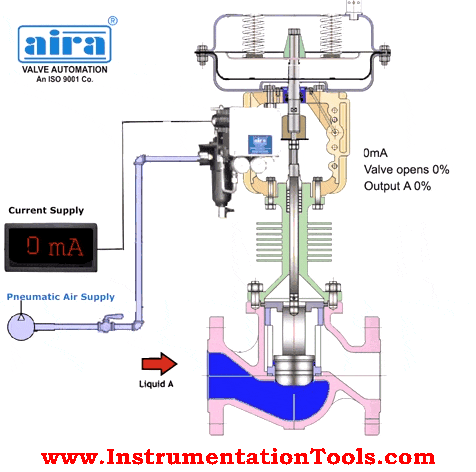Reliable Control Valves: Secret Elements for Reliable System Management
Reliable Control Valves: Secret Elements for Reliable System Management
Blog Article

Maximize Power Cost Savings and Comfort With Advanced Structure Automation Controls
In the realm of modern style and facility monitoring, the combination of sophisticated structure automation regulates stands as an essential improvement. By taking advantage of the power of automation, structures can adjust, respond, and develop in means that were once inconceivable.
Power Efficiency Perks
Energy effectiveness benefits can significantly minimize energy usage and operational expenses in structures. Energy-efficient systems, such as advanced structure automation controls, can optimize the usage of resources like home heating, lights, and air conditioning, leading to lower power expenditures over time.
Additionally, improved energy effectiveness can extend the life-span of building devices and systems. By operating much more efficiently, a/c systems, lighting fixture, and other structure components experience much less damage, resulting in decreased upkeep and replacement costs. Additionally, energy-efficient buildings typically regulate greater building values and rental prices, providing long-term monetary benefits to owners.
Furthermore, power performance can boost passenger convenience and performance. Effectively managed indoor settings with optimum lights and thermal conditions create an even more conducive and positive work space, bring about improved worker satisfaction and efficiency. In general, the power efficiency advantages connected with innovative building automation controls are multifaceted, including cost financial savings, ecological stewardship, and passenger health.
Enhanced Convenience Control
Enhancing comfort control in building atmospheres needs a sophisticated combination of innovative automation systems for ideal passenger health. By utilizing advanced building automation controls, centers can customize the interior atmosphere to meet the details demands and choices of residents. These systems allow precise policy of lights, ventilation, and temperature level, creating a productive and comfortable atmosphere. Owner satisfaction and efficiency are closely connected to thermal convenience, making it important to have systems in place that can adapt to changing problems in real-time.
By integrating these innovative controls, buildings can not only boost comfort however also improve power performance by enhancing system procedures based on real tenancy and usage patterns. Eventually, prioritizing resident convenience through sophisticated automation systems leads to a much more delightful and much healthier indoor setting.
Operational Efficiency Improvements

Moreover, the execution of real-time surveillance and analytics tools enables building drivers to determine power inadequacies and operational abnormalities promptly. By continuously keeping an eye on power usage patterns and system performance metrics, modifications can be made in real-time to maximize energy intake and ensure peak operational effectiveness. control valves. Furthermore, including demand action methods into structure automation controls can additionally enhance operational effectiveness by dynamically changing energy usage based on grid problems and pricing signals
Indoor Climate Optimization
Efficient interior climate optimization is a basic element of structure automation controls, ensuring occupants' convenience and wellness while making the most of energy cost savings. By using advanced sensing units and controls, developing automation systems can constantly check and adjust temperature level, humidity degrees, air high quality, and air flow to create an optimum indoor atmosphere. Keeping comfy and consistent conditions not just boosts owner fulfillment but likewise increases performance and overall health.
Interior climate optimization additionally plays a crucial role in energy performance. By Visit Website fine-tuning home heating, air flow, and cooling systems based on real-time information and tenancy patterns, constructing automation controls can significantly reduce power usage - control valves. Implementing methods such as demand-controlled ventilation and thermal zoning can aid lessen power waste while making sure that each area of the building obtains the needed conditioning.

Sustainable Setting Development
Building automation manages not just optimize interior climate conditions for power performance and occupant comfort yet also lay the foundation for developing a sustainable environment through strategic administration of resources and systems. By integrating advanced building automation technologies, such as sensors, actuators, and intelligent software program, facilities can change and keep track of power usage in real-time to reduce waste and reduce their carbon footprint. These systems enable predictive maintenance, recognizing possible concerns prior to they rise and maximizing tools performance to boost long life and performance.
In addition, sustainable atmosphere creation extends beyond energy management to encompass water preservation, waste decrease, and interior air top quality go now renovation. Structure automation controls can regulate water use, find leaks, and make sure proper garbage disposal practices, adding to total sustainability initiatives. Additionally, by managing and monitoring air flow and purification systems, these innovations enhance resident health and wellness and performance while lowering energy intake linked with HVAC procedures.
Conclusion
In verdict, progressed structure automation controls offer considerable benefits in terms of power cost savings, convenience control, functional efficiency, indoor climate optimization, my latest blog post and creating a sustainable atmosphere. By carrying out these controls, buildings can attain ideal efficiency while reducing power usage and boosting passenger comfort. It appears that making use of sophisticated automation technology is important in improving building performance and producing a much more sustainable future.
Energy efficiency benefits can significantly decrease energy intake and operational prices in buildings. Generally, the energy performance benefits associated with innovative building automation controls are complex, incorporating cost savings, environmental stewardship, and occupant health.
In addition, incorporating demand action approaches right into structure automation controls can better boost functional performance by dynamically readjusting energy use based on grid conditions and rates signals.
Structure automation controls not just maximize indoor environment conditions for energy performance and resident convenience yet likewise lay the structure for producing a lasting atmosphere through tactical management of sources and systems.In conclusion, progressed building automation manages offer significant advantages in terms of energy cost savings, comfort control, operational effectiveness, interior environment optimization, and creating a sustainable atmosphere.
Report this page